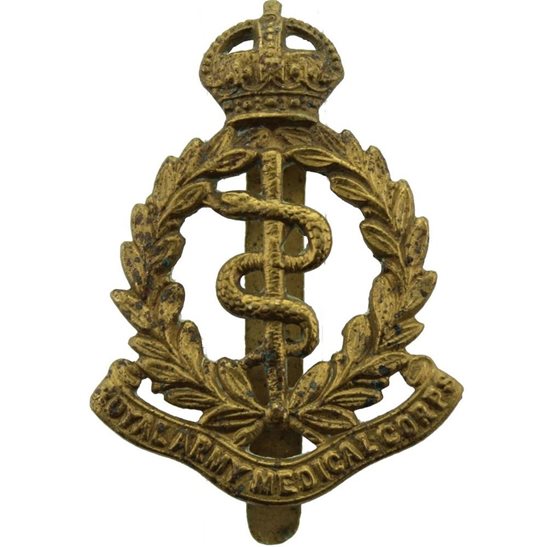Personal Details
Born: 5 October 1891 in Whitchurch and baptised at St Alkmund’s Parish Church 25 November that year.
Family: He was the youngest of four children born to George and Mary Ellen Richardson. No definitive marriage for Harry could be found.
Residence: On his baptism record the family home is given as Newtown, Whitchurch. The 1900 attendance register for Whitchurch National School shows Harry’s address 6 Newtown crossed out and replaced with Oakleigh, Station Road, Whitchurch. The following year the 1901 Census records the address as 30 Station Road, Whitchurch. By 1911 the family appear to have moved a few houses up the same road to Ambleside, 34 Station Road, Whitchurch. This is the same address as given for Harry on the 1919 Absent Voters’ List.
Employment: In 1911 Harry’s occupation was clerk in Union Offices. This was the Poor Law Union where his father was Clerk to the Guardians.
Died: No definitive death could be found
Military Details
Regiment: Royal Army Medical Corps
Rank: Private
Service Number: 67415 (not 07415 as on 1919 Absent Voters’ List)
Date of Enlistment: September 1915
Date of Discharge: After Spring 1919
Reason for Discharge: Not known
Harry was awarded the Campaign Medals (British War Medal and Victory Medal)

The British War Medal (also known as 'Squeak') was a silver or bronze medal awarded to officers and men of the British and Imperial Forces who either entered a theatre of war or entered service overseas between 5th August 1914 and 11th November 1918 inclusive. This was later extended to services in Russia, Siberia and some other areas in 1919 and 1920. Approximately 6.5 million British War Medals were issued. Approximately 6.4 million of these were the silver versions of this medal. Around 110,000 of a bronze version were issued mainly to Chinese, Maltese and Indian Labour Corps. The front (obv or obverse) of the medal depicts the head of George V. The recipient's service number, rank, name and unit was impressed on the rim.
The Allied Victory Medal (also known as 'Wilfred') was issued by each of the allies. It was decided that each of the allies should each issue their own bronze victory medal with a similar design, similar equivalent wording and identical ribbon. The British medal was designed by W. McMillan. The front depicts a winged classical figure representing victory. Approximately 5.7 million victory medals were issued. Interestingly, eligibility for this medal was more restrictive and not everyone who received the British War Medal ('Squeak') also received the Victory Medal ('Wilfred'). However, in general, all recipients of 'Wilfred' also received 'Squeak' and all recipients of The 1914 Star or The 1914/1915 Star (also known as 'Pip') also received both 'Squeak' and 'Wilfred'. The recipient's service number, rank, name and unit was impressed on the rim.

